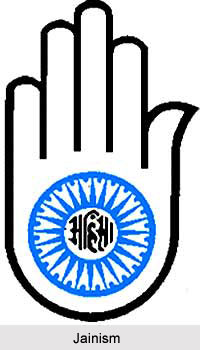 Jain Reform Movement began from the fifteenth century. Of the different divisions of Jainism, the Swetambara Sect and Digambara Sect are the most ancient whereas the Sthanakvasi, Terapanth and Kanji Swami Divisions represent movements. These movements took place in fifteenth, seventeenth and nineteenth centuries respectively.
Jain Reform Movement began from the fifteenth century. Of the different divisions of Jainism, the Swetambara Sect and Digambara Sect are the most ancient whereas the Sthanakvasi, Terapanth and Kanji Swami Divisions represent movements. These movements took place in fifteenth, seventeenth and nineteenth centuries respectively.
Sthanakvasi
Sthanakvasi movement was formed by a Gujarati merchant during the fifteenth century. He did a complete study of the Holy Scriptures and came to the conclusion that the practise of Jainism around was totally corrupt. He thus accepted the authority of only thirty-two of the scriptural texts and rejected the rest. The Sthanakvasis followed the path envisaged in the earliest Holy Scriptures of staying in ruined and deserted building. They did not believe in idol worship. The monks of the Sthanakvasis and Terapanthis wear the muhpatti i.e. a piece of cloth tied to the mouth permanently. Earlier the Sthanakvasis were located chiefly in the north and the west in towns such as Ludhiana in Punjab and Limbdi in Gujarat.
Terapanth
The Terapanth denomination was founded by the eighteenth century Swetambara reformer, Acharya Bhikshu. He was born in 1726 in the desert region of Marwar in Rajasthan. Acharya Bhikshu formed the Terapanth along with thirteen other monks who pursued him in the year 1765. They followed elaborate and long fasting and observed the strictest ahimsa, i.e. tying the muhpatti all the time. The Terapantha regularly observes a notable festival known as Maryada Mahotasava that is celebrated every year on the 7th day of the bright half of the month of Magha. After the death of Acharya Bhikshu, the members of Terapanth accepted Acharya Tulsi as their leader. Acharya Tulsi`s successor Yuvacharya Mahaprajna led another Terapanthi innovation, prekshadhyana, `insight- meditation. `
Kanji Swami Panth
Kanji Swami Panth has been the most successful Jain movement of the twentieth century. Kanji Swami was the founder of the movement. He was born in 1889 into a Sthanakvasi household. The philosophies of the Panth, gave importance to the higher level of truth (nishcaya naya) over the lower one of common life (vyavahara naya). It believed that the three Jewels of right faith, knowledge and practice could only function correctly on the basis of a prior experience of the soul. It also opposed the different types of rites and merit-making practices of Jainism.
Reform Movements in Swetambara Sect
In the early decades of the twentieth century the Swetambara Sect initiated various movements. Most notable of them were the `Bala-diksha Pratibandha Andolana` i.e. the `Prevention of Initiation of Children Movement` and the `Ek Acharya Andolan`, i.e. the `One Religious Head Movement` both the movements proved to be successful in their respectful spheres.
Reform Movements in Digambara Sect
Many reform movements were also launched by the Digambara Sect. among the different movements launched by the sect, the most important were the `Das Pujadhikara Andolana` i.e., `the Dasas` Right to Worship Movement` and the `shastra-mudrana Virodhi Andolana` i.e. the Anti-Scripture Printing Movement.` The first movement received much popularity and was strongly initiated. However, the second could not receive much success and with time it faded.



















